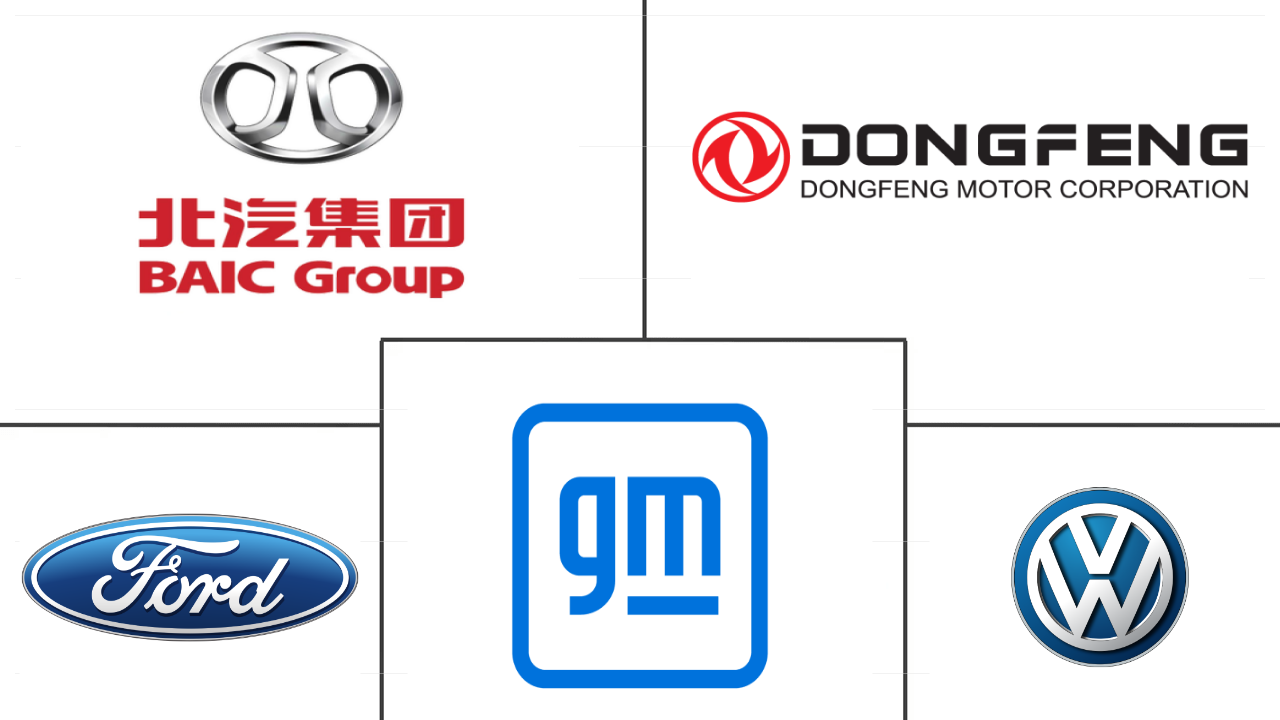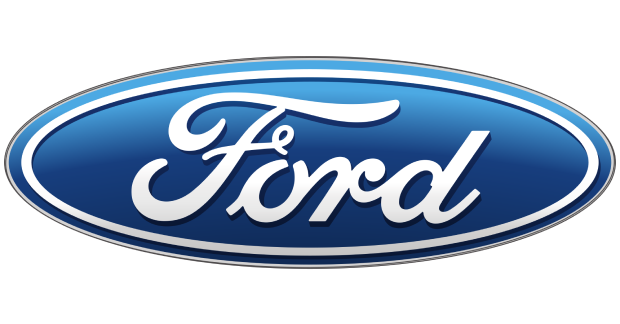Market Size of light commercial vehicles Industry
| Icons | Lable | Value |
|---|---|---|
|
|
Study Period | 2017 - 2030 |
|
|
Market Size (2024) | USD 491.2 Billion |
|
|
Market Size (2030) | USD 710.6 Billion |
|
|
Largest Share by Vehicle Body Type | Light Commercial Pick-up Trucks |
|
|
CAGR (2024 - 2030) | 6.35 % |
|
|
Largest Share by Region | Asia-Pacific |
|
|
Market Concentration | Low |
Major Players |
||

|
||
|
*Disclaimer: Major Players sorted in no particular order |
Light Commercial Vehicles Market Analysis
The Light Commercial Vehicles Market size is estimated at 491.2 billion USD in 2024, and is expected to reach 710.6 billion USD by 2030, growing at a CAGR of 6.35% during the forecast period (2024-2030).
491.2 Billion
Market Size in 2024 (USD)
710.6 Billion
Market Size in 2030 (USD)
2.12 %
CAGR (2017-2023)
6.35 %
CAGR (2024-2030)
Largest Segment by Fuel Category
49.23 %
value share, Gasoline, 2023
Gasoline remains the largest segment due to its widespread availability, lower upfront vehicle costs, and extensive refueling infrastructure supporting light commercial vehicles.
Largest Segment by Vehicle Configuration
51.45 %
value share, Trucks, 2023
Trucks dominate due to their essential role in logistics, high demand for goods transportation, and industrial growth driving the need for robust commercial vehicles.
Largest Segment by Region
34.49 %
value share, Asia-Pacific, 2023

Asia-Pacific leads due to its large population, growing economies, and high demand for light commercial vehicles in both urban and rural areas, supporting diverse commercial activities.
Largest Segment by Country
26.85 %
value share, US, 2023
China leads the global light commercial vehicle market due to its extensive manufacturing capacity, significant domestic demand, and investments in vehicle technology and infrastructure.
Leading Market Player
10.40 %
market share, Ford Motor Company, 2023

Ford leads with versatile light commercial vehicles, strong brand reputation, and an extensive global distribution network, serving businesses worldwide.
The rapidly growing e-commerce and logistics sectors fuel the light commercial vehicle market
- The e-commerce and logistics sectors fuel the light commercial vehicle market. Online retail sales and e-commerce have been rising due to more people having access to the internet and smartphones. Light commercial vehicle purchases are projected to rise, which will assist in the prompt delivery of goods to clients.
- As a result of COVID-19 online sales, the income and user base of the global e-commerce market greatly expanded. However, the increased internet shopping popularity will encourage growth. The global e-commerce market experienced a remarkable expansion in 2020, and by 2021, it generated USD 26.7 trillion in sales. The number and percentage of online shoppers have constantly increased globally over the last few years. The highest increase in the number of online shoppers in 2020 was caused by the COVID-19 pandemic, which forced individuals to shop online.
- The rapid expansion of the e-commerce and logistics industries across major economies, including Europe, the United States, and China, is fueling the demand for a more contemporary distribution network. Thus, the demand for light commercial vehicles will increase. Significant light commercial vehicle manufacturers, like Daimler, Nissan, Ford, and Renault, experienced a dramatic increase in e-commerce sales, which bolstered the logistics industry. Pick-up trucks and vans have traditionally filled the requirement for e-commerce transportation for logistics and consumer delivery services, which is expected to have a substantial positive impact on the global light commercial vehicle market.
The rapid growth of the e-commerce and logistics sectors, spanning major economies like Europe, the United States, and China, is driving the need for more advanced distribution networks
- The e-commerce and logistics industries are the primary drivers of the light commercial vehicle market. With the rising internet and smartphone penetration, online retail and e-commerce sales have surged. This trend is expected to drive the demand for light commercial vehicles, enabling faster deliveries. In 2016, the global production of light commercial vehicles stood at 17,217,999 units and was projected to reach 18,593,850 units by 2021.
- The COVID-19 pandemic has significantly boosted the global e-commerce sector, both in terms of revenue and user base. This trend is expected to continue as online shopping gains further popularity. In 2020, the global e-commerce market witnessed substantial growth, culminating in sales worth USD 26.7 trillion by 2021. The number and proportion of online shoppers have been steadily rising worldwide, with the pandemic acting as a catalyst in 2020, pushing more individuals toward online shopping.
- The rapid growth of the e-commerce and logistics sectors, spanning major economies like Europe, the United States, and China, is driving the need for more advanced distribution networks. Consequently, the demand for light commercial vehicles is poised to rise. Notably, prominent light commercial vehicle manufacturers such as Daimler, Nissan, Ford, and Renault have witnessed a significant surge in e-commerce sales, bolstering the logistics sector. Historically, pick-up trucks and vans have been the go-to choices for e-commerce transportation, catering to both logistics and consumer delivery services. This trend is expected to have a pronounced positive impact on the global light commercial vehicle market.
Light Commercial Vehicles Industry Segmentation
Commercial Vehicles are covered as segments by Vehicle Type. Hybrid and Electric Vehicles, ICE are covered as segments by Propulsion Type. Africa, Asia-Pacific, Europe, Middle East, North America, South America are covered as segments by Region.
- The e-commerce and logistics sectors fuel the light commercial vehicle market. Online retail sales and e-commerce have been rising due to more people having access to the internet and smartphones. Light commercial vehicle purchases are projected to rise, which will assist in the prompt delivery of goods to clients.
- As a result of COVID-19 online sales, the income and user base of the global e-commerce market greatly expanded. However, the increased internet shopping popularity will encourage growth. The global e-commerce market experienced a remarkable expansion in 2020, and by 2021, it generated USD 26.7 trillion in sales. The number and percentage of online shoppers have constantly increased globally over the last few years. The highest increase in the number of online shoppers in 2020 was caused by the COVID-19 pandemic, which forced individuals to shop online.
- The rapid expansion of the e-commerce and logistics industries across major economies, including Europe, the United States, and China, is fueling the demand for a more contemporary distribution network. Thus, the demand for light commercial vehicles will increase. Significant light commercial vehicle manufacturers, like Daimler, Nissan, Ford, and Renault, experienced a dramatic increase in e-commerce sales, which bolstered the logistics industry. Pick-up trucks and vans have traditionally filled the requirement for e-commerce transportation for logistics and consumer delivery services, which is expected to have a substantial positive impact on the global light commercial vehicle market.
| Vehicle Type | ||||
|
| Propulsion Type | ||||||||
| ||||||||
|
| Region | ||||||||||||||||||||
| ||||||||||||||||||||
| ||||||||||||||||||||
| ||||||||||||||||||||
| ||||||||||||||||||||
| ||||||||||||||||||||
|
Light Commercial Vehicles Market Size Summary
The light commercial vehicles market is experiencing significant growth, driven primarily by the booming e-commerce and logistics sectors. The increasing penetration of the internet and smartphones has led to a surge in online retail sales, which in turn is boosting the demand for light commercial vehicles. These vehicles are essential for ensuring prompt delivery of goods, a necessity that has become even more pronounced with the rise of online shopping. The COVID-19 pandemic acted as a catalyst, accelerating the shift towards e-commerce and expanding the global user base. This trend is expected to continue, with major economies like Europe, the United States, and China leading the charge in the development of advanced distribution networks, thereby increasing the demand for light commercial vehicles.
In addition to the e-commerce boom, the market is also witnessing a shift towards electric vehicles (EVs), driven by environmental concerns and supportive government policies. The automotive sector is increasingly focusing on energy efficiency and reducing emissions, with significant growth in EV sales observed in recent years. Leading manufacturers are actively pursuing electrification strategies, aiming for zero-emission fleets in the coming decades. The Asia-Pacific and Europe regions are set to dominate EV production, supported by advancements in battery technology and vehicle electrification. The market remains fragmented, with major players like BAIC Motor Corporation Ltd., Dongfeng Motor Corporation, Ford Motor Company, General Motors Company, and Volkswagen AG holding significant shares.
Light Commercial Vehicles Market Size - Table of Contents
-
1. MARKET SEGMENTATION (includes market size in Value in USD and Volume, Forecasts up to 2030 and analysis of growth prospects)
-
1.1 Vehicle Type
-
1.1.1 Commercial Vehicles
-
1.1.1.1 Light Commercial Pick-up Trucks
-
1.1.1.2 Light Commercial Vans
-
-
-
1.2 Propulsion Type
-
1.2.1 Hybrid and Electric Vehicles
-
1.2.1.1 By Fuel Category
-
1.2.1.1.1 BEV
-
1.2.1.1.2 FCEV
-
1.2.1.1.3 HEV
-
1.2.1.1.4 PHEV
-
-
-
1.2.2 ICE
-
1.2.2.1 By Fuel Category
-
1.2.2.1.1 CNG
-
1.2.2.1.2 Diesel
-
1.2.2.1.3 Gasoline
-
1.2.2.1.4 LPG
-
-
-
-
1.3 Region
-
1.3.1 Africa
-
1.3.1.1 South Africa
-
1.3.1.2 Rest-of-Africa
-
-
1.3.2 Asia-Pacific
-
1.3.2.1 Australia
-
1.3.2.2 China
-
1.3.2.3 India
-
1.3.2.4 Indonesia
-
1.3.2.5 Japan
-
1.3.2.6 Malaysia
-
1.3.2.7 South Korea
-
1.3.2.8 Thailand
-
1.3.2.9 Rest-of-APAC
-
-
1.3.3 Europe
-
1.3.3.1 Austria
-
1.3.3.2 Belgium
-
1.3.3.3 Czech Republic
-
1.3.3.4 Denmark
-
1.3.3.5 Estonia
-
1.3.3.6 France
-
1.3.3.7 Germany
-
1.3.3.8 Ireland
-
1.3.3.9 Italy
-
1.3.3.10 Latvia
-
1.3.3.11 Lithuania
-
1.3.3.12 Norway
-
1.3.3.13 Poland
-
1.3.3.14 Russia
-
1.3.3.15 Spain
-
1.3.3.16 Sweden
-
1.3.3.17 UK
-
1.3.3.18 Rest-of-Europe
-
-
1.3.4 Middle East
-
1.3.4.1 Saudi Arabia
-
1.3.4.2 UAE
-
1.3.4.3 Rest-of-Middle East
-
-
1.3.5 North America
-
1.3.5.1 Canada
-
1.3.5.2 Mexico
-
1.3.5.3 US
-
1.3.5.4 Rest-of-North America
-
-
1.3.6 South America
-
1.3.6.1 Argentina
-
1.3.6.2 Brazil
-
1.3.6.3 Rest-of-South America
-
-
-
Light Commercial Vehicles Market Size FAQs
How big is the Global Light Commercial Vehicles Market?
The Global Light Commercial Vehicles Market size is expected to reach USD 491.18 billion in 2024 and grow at a CAGR of 6.35% to reach USD 710.57 billion by 2030.
What is the current Global Light Commercial Vehicles Market size?
In 2024, the Global Light Commercial Vehicles Market size is expected to reach USD 491.18 billion.

